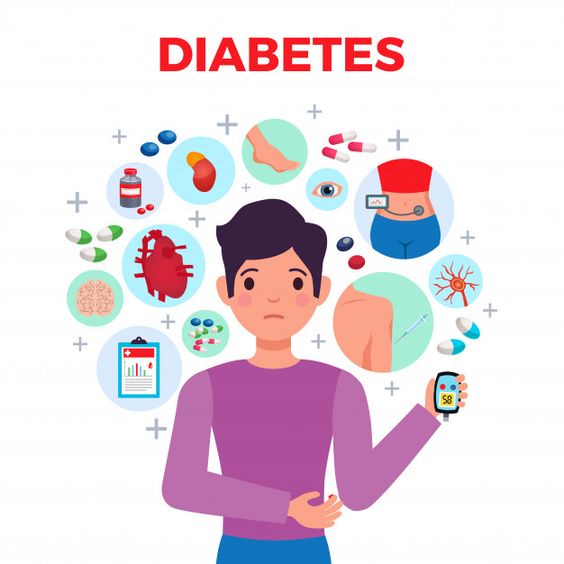
Study Sheds light on effectiveness of Mindfulness Meditation vs Headache Education for Migraine patients
January 11, 2021
Significance of Lifestyle Intervention for Patients of Gastroesophageal Reflux Disease
January 25, 2021In present era, cancer is one of the leading causes of mortality. The disease occurs due to uncontrolled growth of abnormal cells which can potentially spread or invade other parts of the body.
Our body is made-up of billions of cells which are anatomical and functional units of the body; collectively cells form tissues which makeup organs such as liver, heart, lungs, brain etc. Every cell of the body is programmed to multiply and die. Thus when required a cell receives instructions to die so to get rid of those cells that are defective or have come to end of their life spans; likewise cells also receive instructions to multiply so that newer cells that function better replace the older and defective ones.
Sometimes abnormal or cancerous cells are produced in the body due to mutations or abnormalities that occur in genes. Genes are present in the nucleus of the cells and are made-up of DNA (deoxy ribonucleic acid) that carries instructions for all the vital life processes. However, mutations frequently occur in DNA but usually cells correct them; if not corrected a cell can become cancerous. Abnormal or cancerous cells are unable to function properly. Moreover, cancerous or abnormal cells lack the mechanisms that instruct them to stop dividing and to die. As a result these abnormal cells go on dividing and form tumorous growth. The tumor forms many blood vessels to survive, as these supply the tumor with oxygen and nutrients. This compromises the oxygen and nutrients supply of the healthy cells. The cancerous cells become very dangerous when they begin to invade through blood vessels into adjacent areas and distant organs.
Some of the risk factors for developing cancer are; smoking, heavy alcohol consumption, poor nutrition, hereditary or genetic factors, exposure to some viruses, excess body weight, exposure to radiation and exposure to toxic chemicals etc.
There are many types of cancers such as breast cancer, lung cancer, colon cancer, liver cancer etc. Signs and symptoms of the disease usually depend upon its site and location but some common symptoms may include a lump, abnormal bleeding, unexplained weight loss, loss of appetite etc.
Physicians usually suggest treatments based on the type of cancer, its stage at diagnosis and patient’s overall health. Advanced knowledge of characteristics of cancerous cells has enabled scientists to introduce new medications and treatment technologies. Some of the common approaches are surgery, radiotherapy, chemotherapy etc.
However, it is not a typical illness basically it is the malfunction of body’s own regulatory or regenerative mechanisms. There is more hope for cancer patients than ever before but there is still long way to go. Life style modifications such as quitting smoking, healthy diet intake, exercise, stress management, enjoying life and loved ones can be key steps in preventing cancer.
According to the paper published in the Journal Medical Hypotheses by researchers from Lancaster University’s Faculty of Health and Medicine; and from University Hospitals of Morecambe Bay NHS Trust; scientists expect that bacterial induced inflammation is linked to cancer; their idea as yet unproven but is supported by available evidence.
Researchers have suggested that there is a simple, inexpensive potential preventive remedy, which is for women to consume natural yogurt on daily basis. Yogurt contains beneficial lactose fermenting bacteria commonly found in milk, which is similar to the bacteria or microflora- found in the breasts of mothers who breast fed.
[Microflora or microbiome refers to the colonies of the microbes (bacteria, fungi, viruses, protozoa etc.) that live inside and on the human body. These microorganisms perform tasks that are known to be beneficial or useful to human host but role of most of them is not well understood.]
The researchers argue that this lactose fermenting bacteria in the breast is protective because each year of breast feeding reduces the risk of breast cancer by 4.3%.
According to the researchers they now know that breast milk is not sterile and that lactation alters the microflora of breast; they further added that lactose fermenting bacteria are commonly found in milk and are likely to occupy breast ducts of women during lactation and for unknown period after lactation.
Furthermore, several other studies which have been conducted also support the idea that consumption of yogurt is associated with a reduction in the risk of developing breast cancer; which as suggested by researchers may be due to displacement of harmful bacteria by beneficial bacteria.
There are approximately 10 billion bacterial cells in the human body and while most are harmless, some bacteria create toxins which trigger inflammation in the body; chronic inflammation destroys the harmful germs but it also damages the body. Thus researchers expect that one of the causes of breast cancer may be chronic inflammation.
Moreover, scientists have concluded that as the stem cells (cells with potential to develop into many different types of cells in the body; they serve as a repair system for the body) which divide to replenish the lining of the breast ducts are influenced by the microflora; and certain components of the microflora have been shown in other organs such as colon (large intestine) and stomach to increase the risk of cancer development.
They further added that a similar scenario is likely to be occurring in the breast; whereby resident microflora impact on stem cell division and influence cancer risk.
REFERENCE:
Why eating yogurt may help lessen the risk of breast cancer
https://www.sciencedaily.com/releases/2020/01/200124073857.htm




